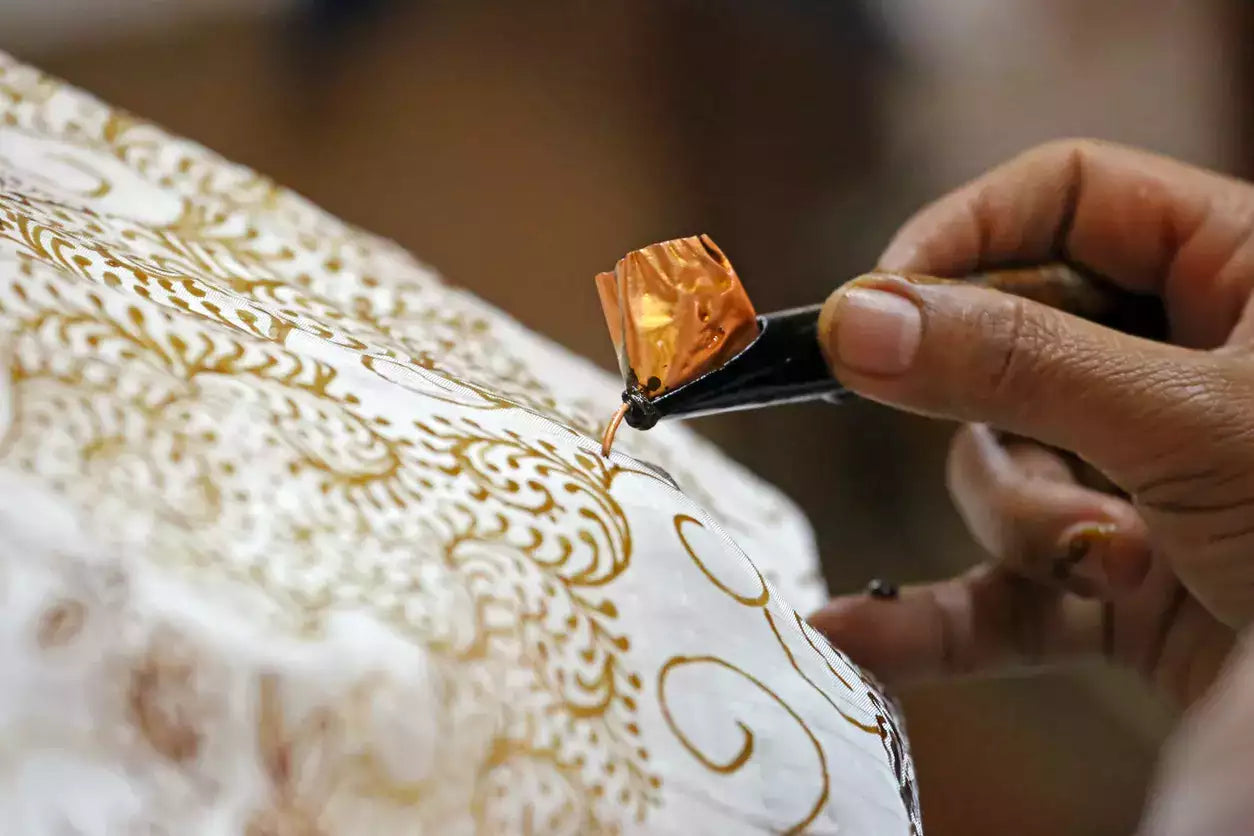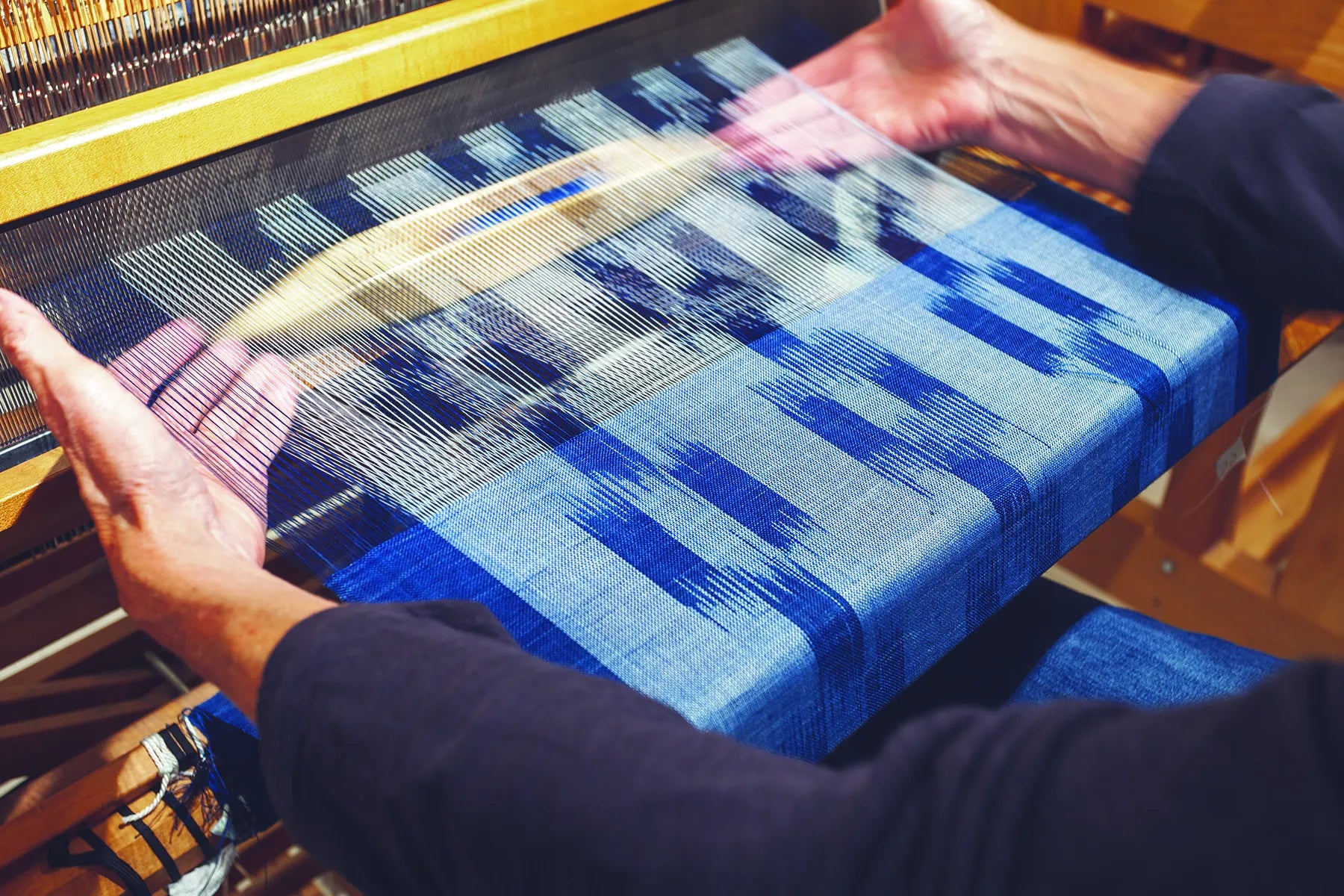
The Ultimate Guide to Batik Fabric -
Batik is an ancient art in which wax is used to create magnificent prints on the fabric. The term Batik is derived from the combination of Javanese words “amba” –which means to write and “titik”- means a dot. The exact origin of Batik is unclear but it’s believed to be widely practiced in Southeast Asia.
The roots of Batik in India are traced to be 2000 years old. Maharashtra's Ajanta Caves include designs of batik, signifying that the craft was prevalent in India before the 7th century CE. Women of aristocracy preserved the batik art exquisitely; the tender handmade batik designs with flower and bird motifs rose as a symbol of sophistication and luxury. Traditional Indian batiks used indigo, brown and white colors in honor of the three Hindu deities-Vishnu, Brahma and Shiva. Today, Mundra and Mandvi in Gujarat’s Kutch district are the main Batik craft producing centers.
An artisanal technique of dyeing :
The art of Batik being a wax-resist dyeing technique is carried out through an intensive process that involves waxing, dyeing, and de-waxing or scrapping the wax.
First, the design patterns are traced onto the fabric. An immensely detailed and elaborate process, these designs are created using a small pen-like copper tube called canting that lets the artist draw with the molten wax on the cloth. It demands the utmost level of patience and precision as any accidental wax spilling could result in a ruined design. The molten wax is used so that the waxed area can be protected from being colored when soaked in dye.
The cloth is then soaked in desired colors multiple times to obtain the intended blend and once the cloth is dry, the resist wax is removed by boiling or scraping the wax off the cloth. The parts covered with wax retain their original color when the wax is removed, thus forming patterns between the dyed and undyed areas forms the patterns. This process may be repeated multiple times to achieve complex and multi-tonal designs.
The diverse styles of creating Batik :
The array of colors and patterns expressed on Batik is a stunning visual treat that garners admiration from every connoisseur of art. From traditional techniques to advanced printing techniques, below are the types of batik every textile art enthusiast or Indian art lover should know of:
- Block prints: One of the most ancient batik creating methods, this technique uses finely carved wood or copper hand stamps to trace designs on the fabric. It can be easily recognized by the consistency in line, space, and pattern.
- Freehand Drawing (Batik Tulis): A free-hand or template-based drawing by the artisans, this technique truly brings out the wizardry and command of the artisans over this craft. Most of these handcrafted masterpieces become treasured heirlooms dripping with stature, class, and prestige.
- Blend of free Hand Drawing & Block Printing: With greater advancements in the industry, the artisans have clubbed the best of both worlds to cater to the growing demands of batik in the international market, while beautifully preserving the essence of it all.
Hassle-free maintenance of Batik wear :
While this luxurious textile may require a little extra attention and care, maintaining batik fabrics and heirlooms are quite easy if you follow some basic tips. Batik fabrics should be cleaned using col d water and a very mild detergent preferably with hands. The new batik buys should ideally be washed in one or two cold rinses (without any detergent or soap) to remove excess dye from the fabric. Silk Batiks should be ideally dry cleaned for longer lasting luster.
An everlasting pride of Batik :
Having survived and thrived myriad of generations, Batik truly is one of the most treasured textile arts in the country that remains untouched by any adulteration thanks to the artists that have dedicated themselves to preserving this art in all its dignity.
Dorrcee, our company, is dedicated to creating timeless pieces using the varied forms of handcrafted Indian handlooms, textiles, and art forms, offer an extensive Batik look book to our global clients. You can explore our entire collection on our website, here.

Leave a comment
This site is protected by hCaptcha and the hCaptcha Privacy Policy and Terms of Service apply.